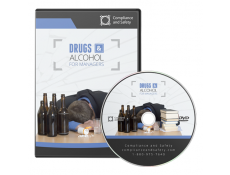
October 15, 2014
Study: 1 in 10 employees have shown up for work high


October 15, 2014

Before you chalk it up to relaxed medical marijuana laws in more than two dozen states or even legalized recreational weed, consider that almost 81% of the people who admitted to showing up to work stoned obtained the drugs illegally.
This is all according to a recent online survey conducted by Mashable, which polled 534 people in the SurveyMonkey Audience.
When it came to other illegal drugs, individuals were much less likely to show up to work high (or admit it, at least).
Only 3% of respondents admitted to coming to work high on another illegal substance.
In terms of drug use on the job, 94% of people said they were “very unlikely” to use marijuana at work. Almost 96% said the same thing about other illegal drugs.
The survey also looked at prescription drug use on the job. Predictably, the number of workers who admitted to showing up for work “under the influence” of prescription drugs was much higher.
Slightly more than 28% of workers said they’d shown up for work on prescription pills. However, 93% said they were taking the medication for medical purposes.
Mashable asked an interesting follow-up question about medical vs. recreational use: Was this drug prescribed to you by a doctor? Almost 95% said the medication had been prescribed by an M.D.
That means some portion of workers who admit to showing up high on medication prescribed by a doctor were using it for recreational purposes.
The indications that a worker is high on the job vary from person to person, and you can’t count on stereotypical warning signs to identify employees who may be a danger to themselves or others.
But spotting these hazards is essential to a safe workplace. Studies show workers with substance abuse issues are five times more likely to:
Here’s one thing you, supervisors and frontline workers can keep an eye out for: a sudden change in a worker’s behavior.
Look for instances where a worker’s behavior seems out of the blue — suddenly missing more work than usual, lack of concern for hygiene, overreacting to criticism, dip in productivity, etc.
If someone’s behavior changes suddenly, it could be a red flag.
Some demographics on respondents from the survey:
This article retreieved from Safetynewsalert.com


